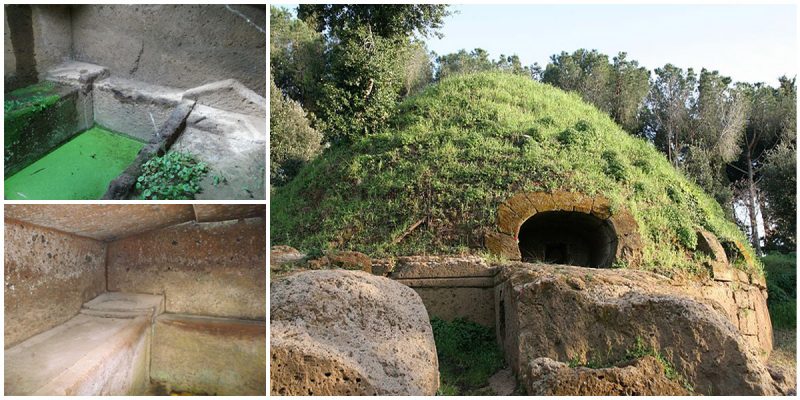Located on top of a hill north to Cerveteri, the Etruscan Necropolis of Banditaccia contains thousands of tombs organized in a city-like plan, with streets, small squares, and neighborhoods.
Often called a ‘city of the dead’, it is a unique and exceptional testimony to the ancient Etruscan Civilization, the only urban civilization of the pre-Roman Age.
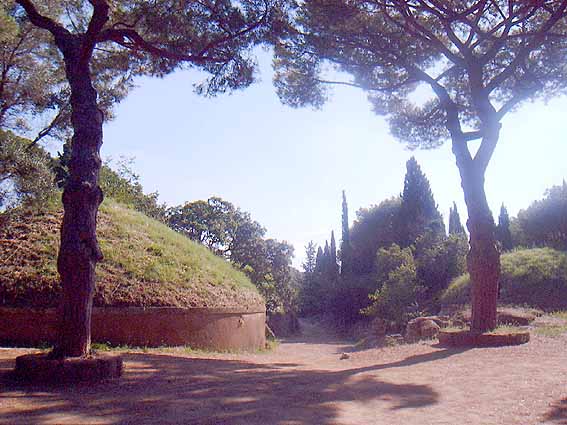
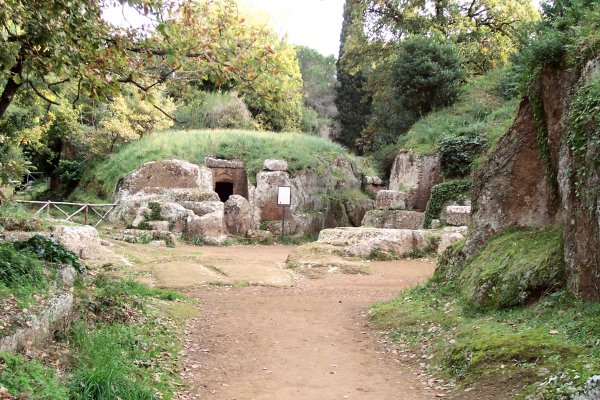
Each necropolis tombs has very different traits one from the other, depending on the construction period and technique. The Etruscan settlement of Cerveteri can be dated back to the 9th century B.C., and its necropolis, which contains thousands of tombs, was in use since the 7th century B.C.
The simplest tombs were just small pits and holes, where ashes of the dead were kept.
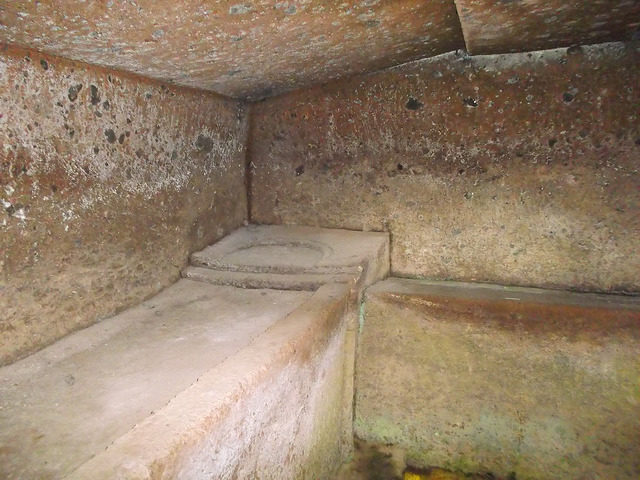
From there, the city expanded, requiring more architecture and even a small amount of city planning. Some of the tombs are monumental, cut into a rock and topped by impressive tumuli (burial mounds).
The tumuli are circular structures built in tuff, and the interiors, carved from the living rock, house a reconstruction of the house of the dead, including a corridor (dromos), a central hall, and several rooms.
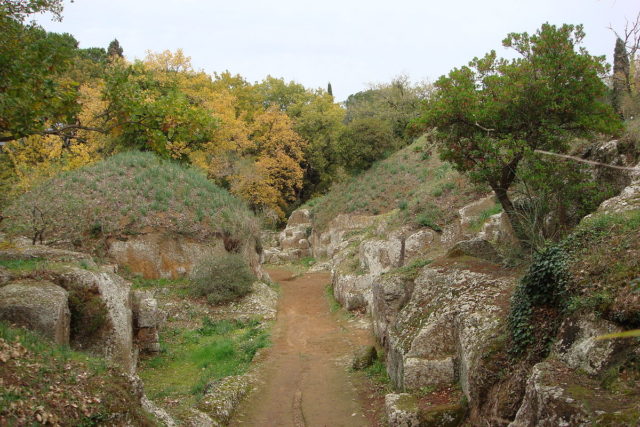
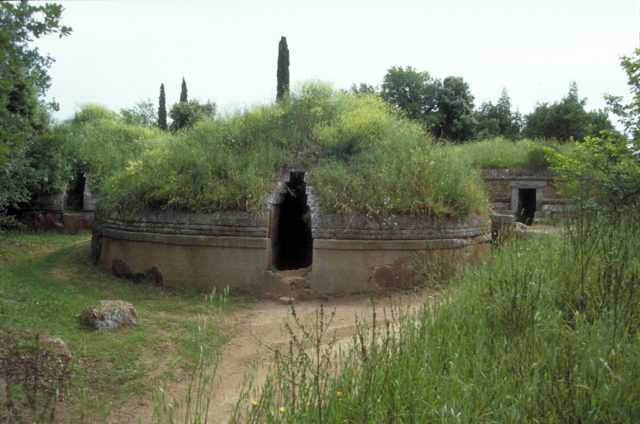
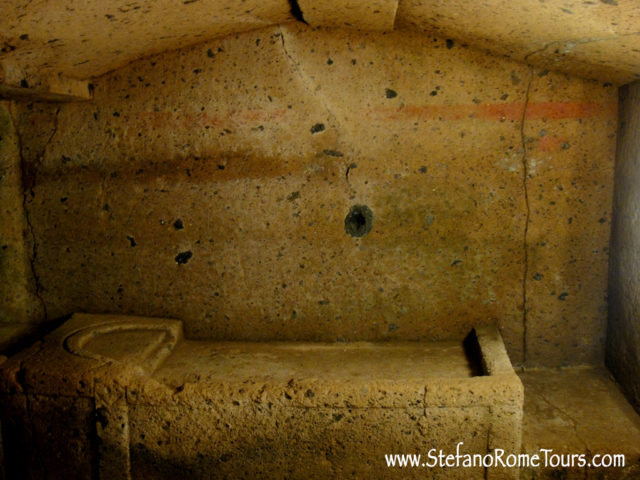
During the early sixth century, a virtual City of the Dead started to emerge with the so-called Dado (cube shaped tombs) which were literally built in streets. Their typology differs in relation to the historical period and the status of the family to whom they belonged.

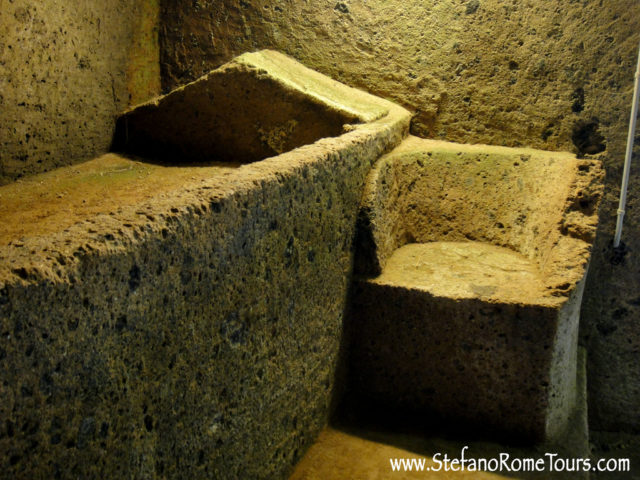
Because they were built to mirror the Etruscan habitation itself, they are the only examples left of such in any form anywhere. Among the most important tombs uncovered there are the Tomb of the Reliefs (built in the 4th century BC), the Tomb of Shields and Seats, the Five Seat Tomb and the Alcove Tomb.
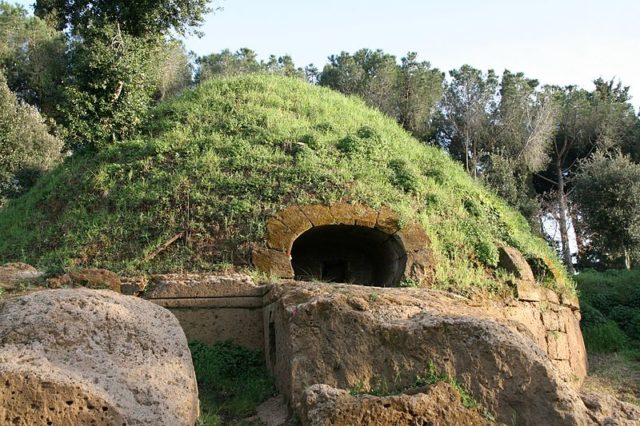
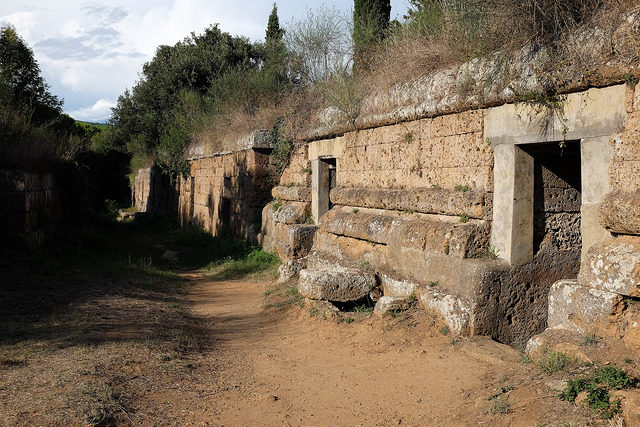
A large number of finds excavated at Cerveteri are in the National Etruscan Museum, Rome, with others in the Vatican Museums and many other museums around the world. Recently some of the tombs have been virtually ‘reconstructed’ with their original art, Greek vases, and other grave goods (now in museums) using 3D technology.
